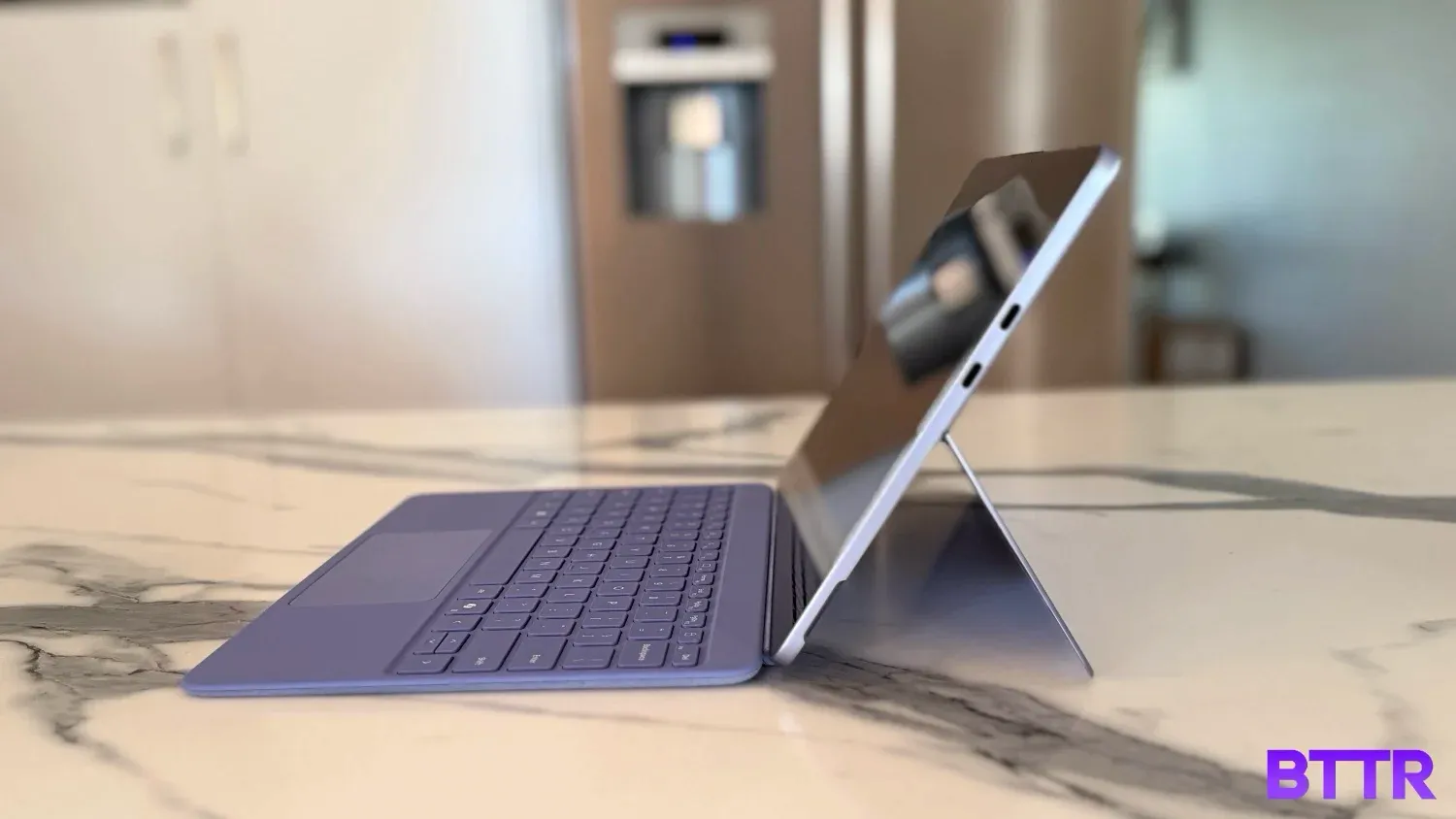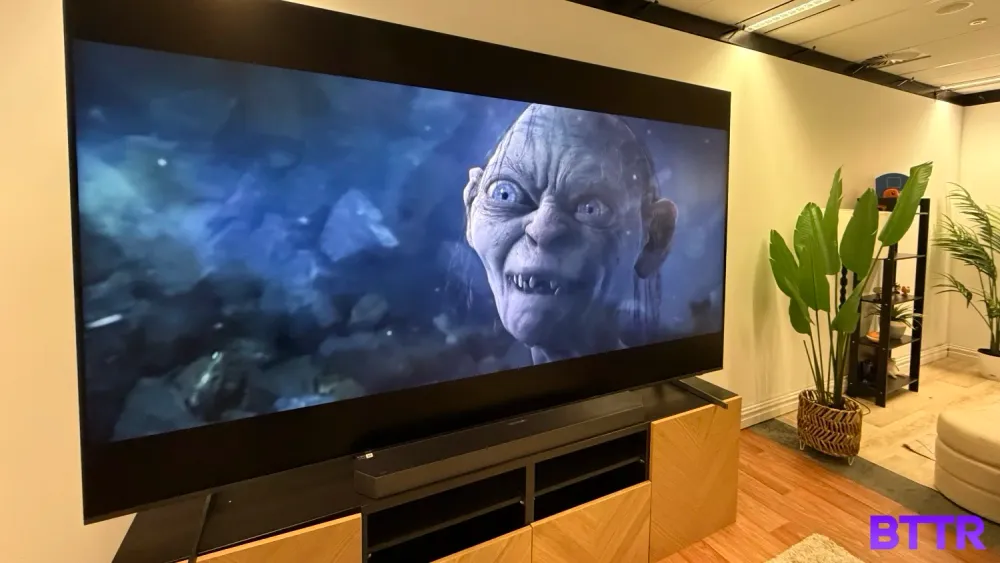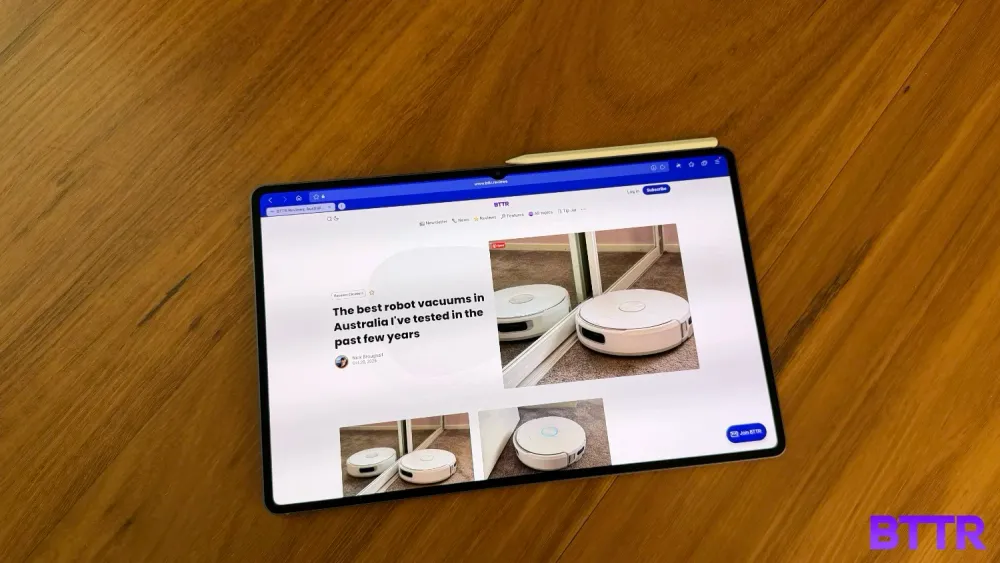Microsoft's 12-inch Surface Pro is brilliantly portable and has plenty of power without sacrificing battery life, but gets expensive when you add in the accessories.
- Lightweight, portable, stylish design
- Solid all-day battery life
- Accessories make this tablet a laptop competitor
- No wall charger in the box
- Accessories get quite expensive
- Not all apps/games work with the Snapdragon X Plus chipset
When Apple first launched the iPad, it seemed to me that the tablet form factor was all about compromise. It offered the larger screen of a laptop, but lacked the power and accessories to really deliver the productivity of a laptop.
That’s changed a lot in the 15 years since Steve Jobs first revealed the iPad, but the 12-inch Surface Pro was the first time I’ve felt that a tablet was truly capable of working as a laptop replacement.
Now, there are a lot of asterisks that should sit next to that last statement. For a start, I haven’t reviewed an iPad Pro with a Smart Keyboard attachment, and I haven’t looked at a Surface tablet probably since the first generation.
So my experience (or lack thereof) has likely limited my view on just how good a tablet can act as a productivity tool today.
But that maybe does the 12-inch Surface Pro an injustice. Because the reality is that the combination of the Snapdragon X Plus processor and Windows here really does create an impressive device. It’s sleek and stylish, portable, and has plenty of battery life.
The catch is that to get that level of experience, you need to spend a lot of money on accessories. It quickly turns a $1,499 device into a much more expensive device, just to get the proper experience.
Still, outside financial considerations, I really liked the Surface Pro 12-inch model. Let’s dive into why.
@bttr_reviews A fun new unboxing today: @Microsoft Australia 🇦🇺 ‘s new 12-inch Surface Pro. For a company that mostly does software, this thing is a really nice piece of hardware… Make sure you follow for the full review! #unboxing #surfacepro #techreviews
♬ Dazey - Double Parked
What makes the Surface Pro 12 stand out?
If you go shopping for some of the most portable laptop models, you’ll find the most popular units (like the MacBook Air) typically start with a 13-inch display.
13 inches is a good compromise for weight, ease of use and brightness, but it does add to the bulk of the unit.
Microsoft’s 2025 Surface Pro comes with a 12-inch screen. That 1-inch smaller display makes a significantly bigger difference to portability than you might expect.
The tablet’s weight starts at just 686 grams, and the body measures just 7.8 mm thick. Obviously, that goes up when you add the keyboard and pen to the equation, but it’s a really subtle difference in weight to your bag when you throw it in.
Being a Microsoft product, the big difference this has compared to the iPad or an Android tablet like the Galaxy Tab S10 Ultra is that it runs Windows.
But it’s slightly more complicated than that because this model is powered by the Snapdragon X Plus chipset. That means that the version of Windows it’s running is designed for ARM chips rather than more traditional Intel processors.
There are definitely pros and cons to this. Battery life is a big winner, but software compatibility does suffer. It’s something to keep in mind when deciding if you should buy one of these tablets.
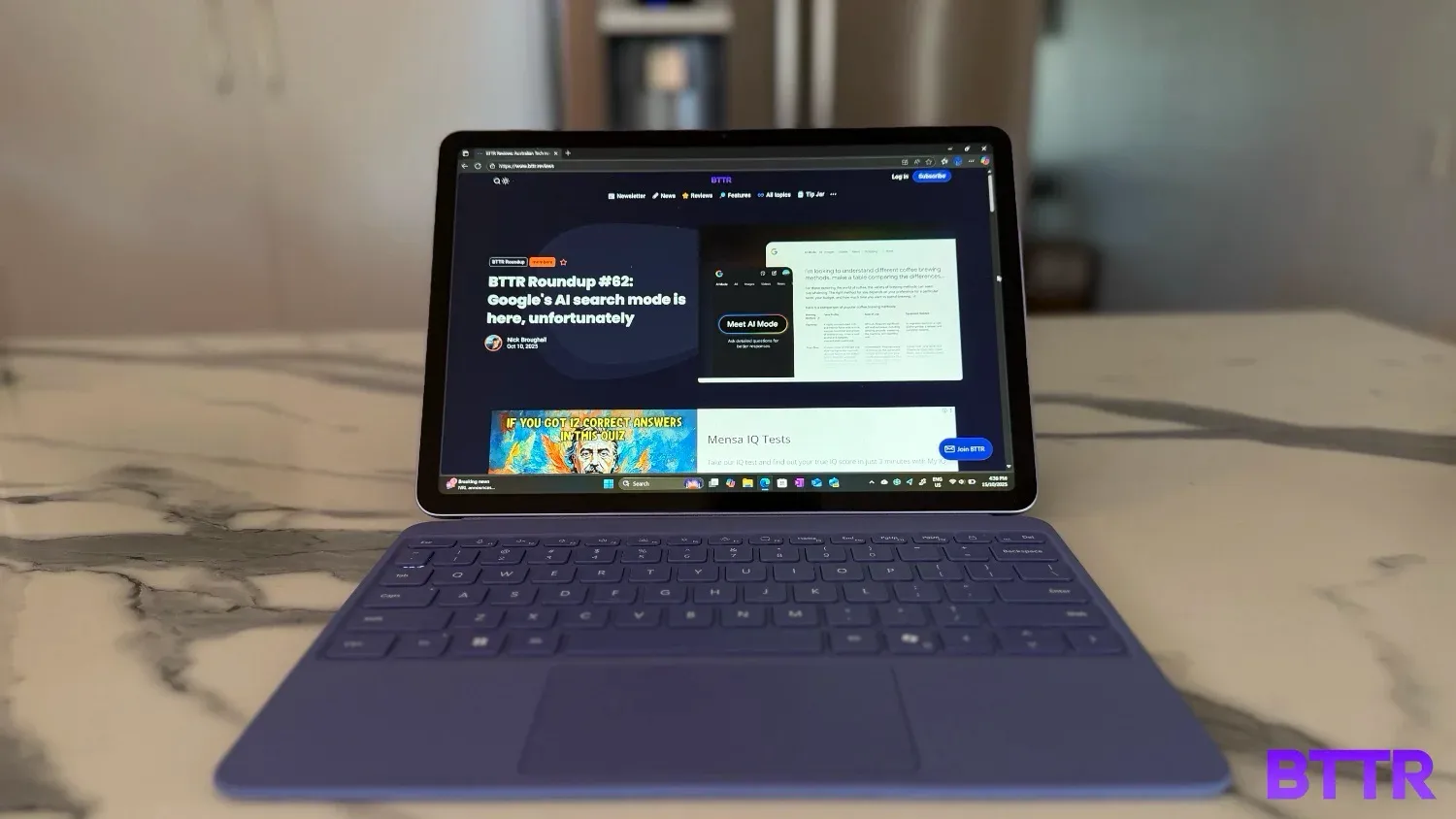
Microsoft Surface Pro 12-inch tablet specs
| Feature | Specification (Surface Pro, 12-inch) |
|---|---|
| Processor | Snapdragon® X Plus (8 Core) |
| Neural Processing Unit (NPU) | Qualcomm® Hexagon™ with 45 TOPS |
| Graphics | Qualcomm® Adreno™ GPU |
| Memory (RAM) | 16 GB LPDDR5x RAM |
| Storage Options | 256 GB, 512 GB (UFS) |
| Display | 12” PixelSense LCD display Resolution: 2196 x 1464 (220 PPI) Aspect ratio: 3:2 Dynamic refresh rate: up to 90Hz |
| Battery Life | Up to 16 hours of video playback |
| Ports | 2 x USB-C® / USB 3.2 ports (supports charging, data transfer, DisplayPort 1.4a) |
| Wireless Connectivity | Wi-Fi 7, Bluetooth® Core 5.4 technology |
| Cameras | Full HD (1080p) front-facing Surface Studio Camera 10MP Ultra HD rear-facing camera |
| Security | Microsoft Pluton TPM 2.0, Windows Hello face authentication |
| Weight (without keyboard) | Starting at 686 g |
Design and build quality
Microsoft sent me the “violet” model for this review, and I have to say I am a massive fan. The body is made from an anodised aluminium, and the light purple shade captures and reflects the light to really show off its elegance.
The kickstand pulls out effortlessly, letting you set up the tablet at the most comfortable angle for your particular needs (so long as you’re using it in a horizontal mode)
It feels really well-made, solid in the hand and robust in a bag. There aren’t a lot of ports – only a pair of USB-C connections – which does detract from the vision of productivity you might have. I partnered the tablet up with the Espresso 15 Pro and plugged it in, and it was more than enough for my productivity needs.
Actually, that’s not entirely true. Microsoft sent me a full suite of accessories, including the Surface Keyboard 12-inch with Slim Pen, Arc mouse and the Surface 45W USB-C wall charger.
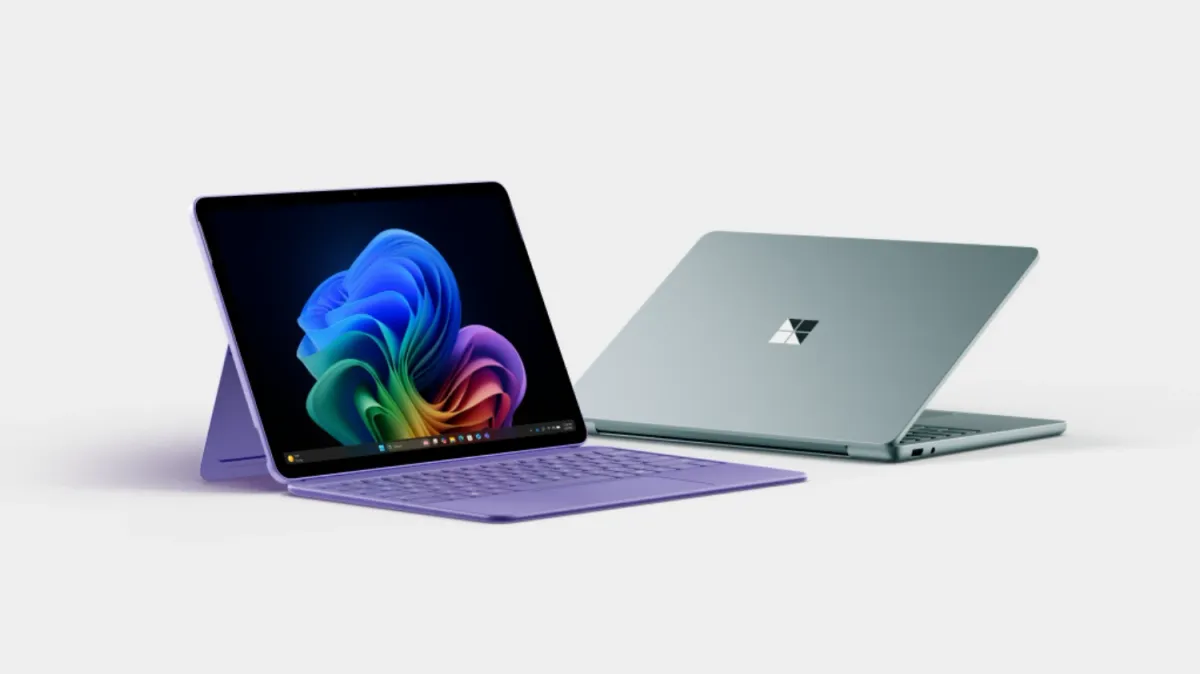
If I’m completely honest, it’s the keyboard and stylus that truly make the Surface Pro a productivity tool. The keyboard effortlessly attaches to the tablet magnetically, and magnetically seals shut as well, protecting the display.
The matching purple shade, along with the soft-touch outer surface of the keyboard, help complete the style of the device, but with the benefit of being good to type on as well. The trackpad is responsive and quick to respond as well.
The Surface Pen, meanwhile, conveniently attaches to the back of the tablet magnetically. What’s more impressive is that it wirelessly charges in that position, so you never really have to worry about the stylus running out of juice.
It does stick out a bit, so there is a very real chance of it being knocked off and lost at the bottom of a bag. But it’s still a more secure attachment than the stylus on something like the Galaxy Tab S11 Ultra.
Upgrade your membership to support independent reviews
For as little as $10/month, you can read every article on the site ad-free, and support indie Aussie media.
Paid members get:
- 🙌 An ad-free reading experience
- 👍 Complete access to all the BTTR archives
- 📰 Exclusive newsletter content
- ⭐️ Plus lots more!
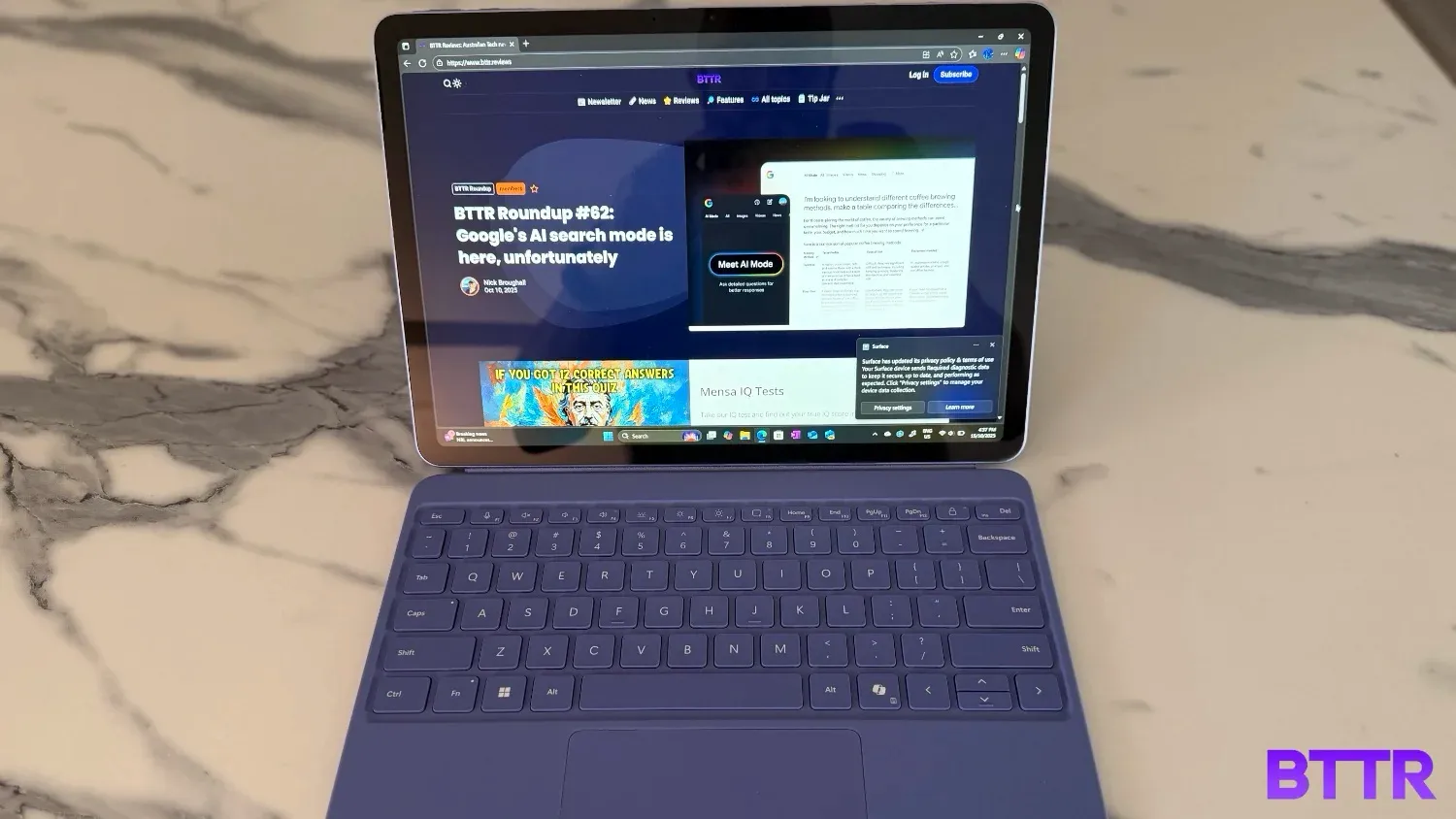
Display performance
The 12-inch PixelSense LCD touchscreen boasts a resolution of 2196 × 1464 pixels with a 220 PPI pixel density. The tablet itself has a 3:2 aspect ratio, which is a little squat in today’s more widescreen designs, but I actually found the squarer shape made it feel larger than its 12 inches on the diagonal.
The 12-inch screen has a dynamic 90Hz refresh rate, which seems a little undercooked for the price point. But to be honest with you, it’s not like I really noticed it while using the tablet for work – a 120Hz display is wasted on spreadsheets, and Word documents, after all.
The 12-inch Surface Pro’s screen is also a little underpowered on the brightness front. According to the specs, it maxes out at about 400 nits of brightness, compared to 600 nits on the 13-inch model. If you find yourself wanting to use the tablet in full sunlight, that brightness doesn’t quite do enough to make the screen easy to see.
Being a tablet, the Surface Pro is a touchscreen device, and in this, it excels. The 12-inch screen accurately picks up your finger presses and supports 10-point multitouch — though I still haven’t really found a use case for that many touch points.
The optional stylus works incredibly well. It’s easy to handwrite, or draw on the screen, and its magnetic attachment to the back of the tablet is more secure than you would expect.
But it’s also a pricey accessory. If you’re artistically inclined, the $229.95 Surface Slim Pen may be worth the money. But for most people, it’s an optional purchase you will probably want to pass on, as it doesn’t really add a huge amount to the overall experience.
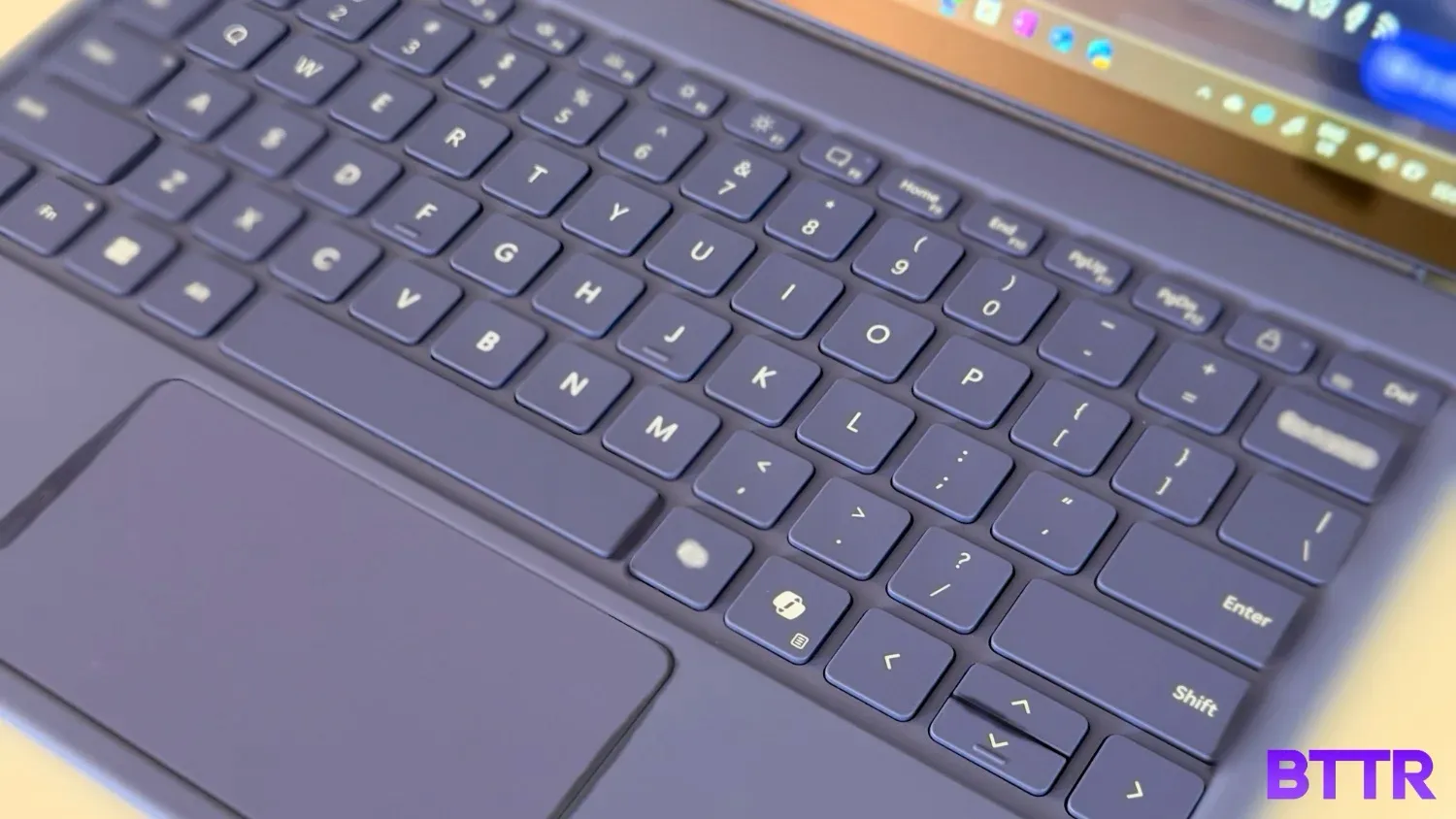
Performance and software
The fact this tablet is powered by the Snapdragon X Plus processor means that there are a few things you should be aware of before purchase. One is that you’ll get pretty solid battery life.
The second is that, despite this being a Windows 11 device, not all of your apps or games will run on it.
There’s a technical reason around chipset architecture, but to simplify it, basically you need to know that apps created exclusively for Intel processors typically don’t work.
When it comes to core apps, like Microsoft Office, this isn’t a problem. In fact, most apps are fine and have a version you can use on the Surface Pro 12. But this incompatibility does pop up in random places – like there’s no version of Fortnite playable on the Surface Pro 12, for example.
When it comes to actual performance, The 12 Pro is a little underwhelming. From a benchmarks' perspective, running GeekBench 6 highlights that the Snapdragon X Plus doesn’t blow the software away.
I haven’t tested too many tablets over the past year, so the comparison table isn’t as complete as I would like, but for a $1,499 device, the numbers here against the past two generations of Samsung Galaxy Tab S tablets don’t look fantastic.
Naturally, benchmarks are only a small part of the experience. For the most part, I found the Surface Pro 12 powerful enough for general work tasks.
When I tried to push the tablet by playing Wolfenstein: The New Order, the game itself was playable, though it did drop frames.
But the Surface lineup has never been designed for gaming. It’s a portable productivity product, and in that regard it delivers, for the most part.
Being a Microsoft product, there’s a whole heap of AI functionality built into the device, from the CoPilot key on the keyboard attachment to the “creativity” options in Windows like AI photo editing or having CoPilot write an email for you.
At absolutely no point in my testing did I feel that any of those apps or services were useful. Honestly, AI “productivity” is such a load of crap – you absolutely should not buy a product based on it offering some level of “AI”.
Fortunately, you don’t have to use the AI, so for most of my testing, I just didn’t.
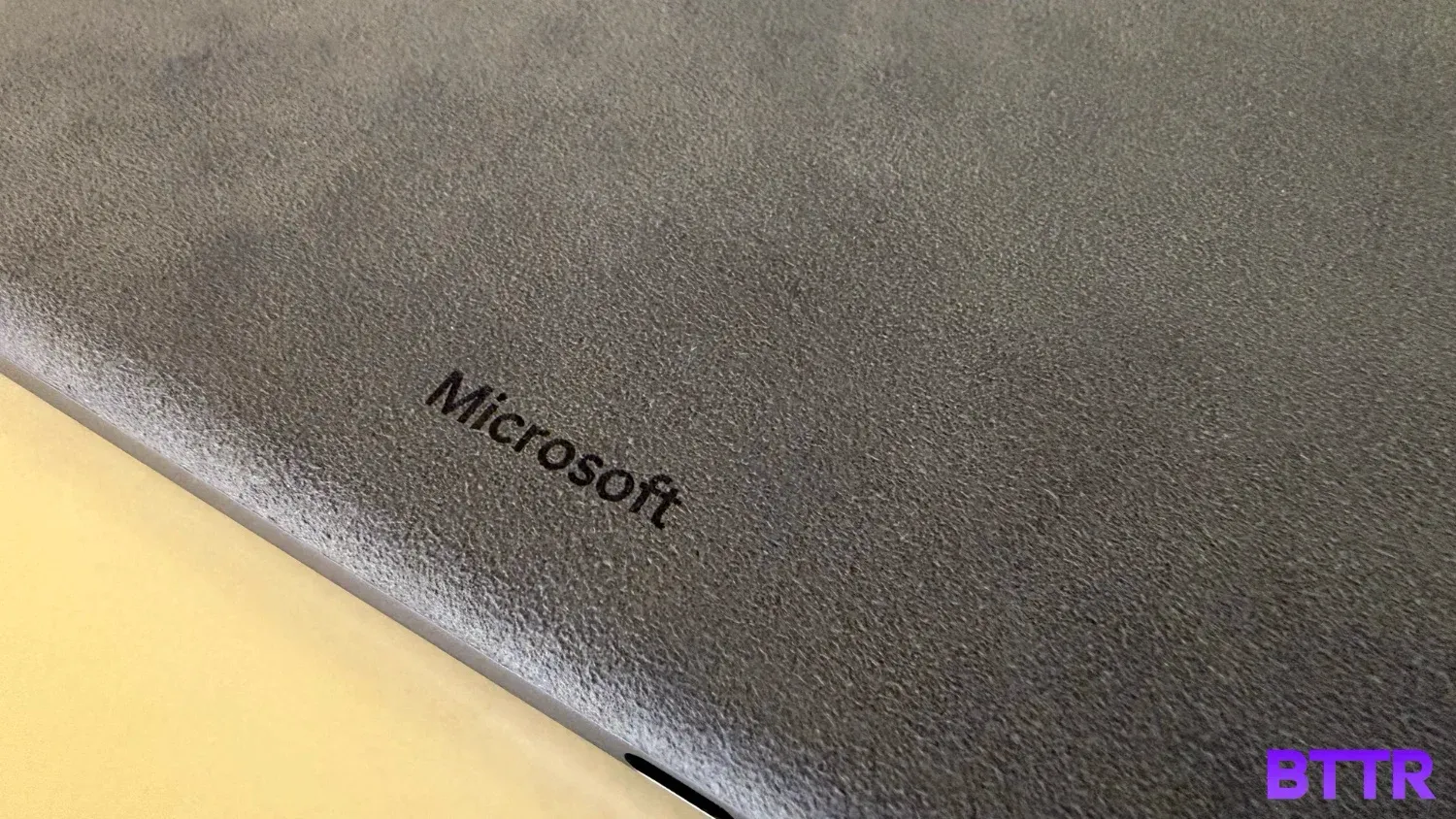
Battery life and connectivity
While the SnapDragon X Plus processor underwhelms a bit with benchmarks and more intense games, it does offer pretty good battery life.
Obviously, battery life varies depending on how you use the product. But for what it’s worth, Microsoft claims you’ll get about 16 hours of local video playback or about 12 hours of active web usage from a single charge.
And that feels about right, though I’m not sure who watches videos locally in the age of streaming.
I will call out that the standby battery life is remarkably solid as well. I went a week without using the device, and when I went to turn it on I expected it to need a charge, but it was still ready to go.
Charging is done via one of the two USB-C ports on the bottom (side?) of the tablet. But there’s no charger in the box – if you want a wall charger, Microsoft’s 45W option is an extra $79.95 during checkout.
Honestly, that’s a rip off. It should be in the box.
Beyond battery life, the Surface Pro 12-inch offers Wi-Fi 7 and Bluetooth 5.4. Those USB-C ports support DisplayPort 1.4a, which means you can connect to two 4k monitors at 60Hz if you so choose.
The front-facing 1080p camera lets you log in with Windows Hello and is fine for video conferencing, but I have no idea why anyone would use the 10MP rear camera.
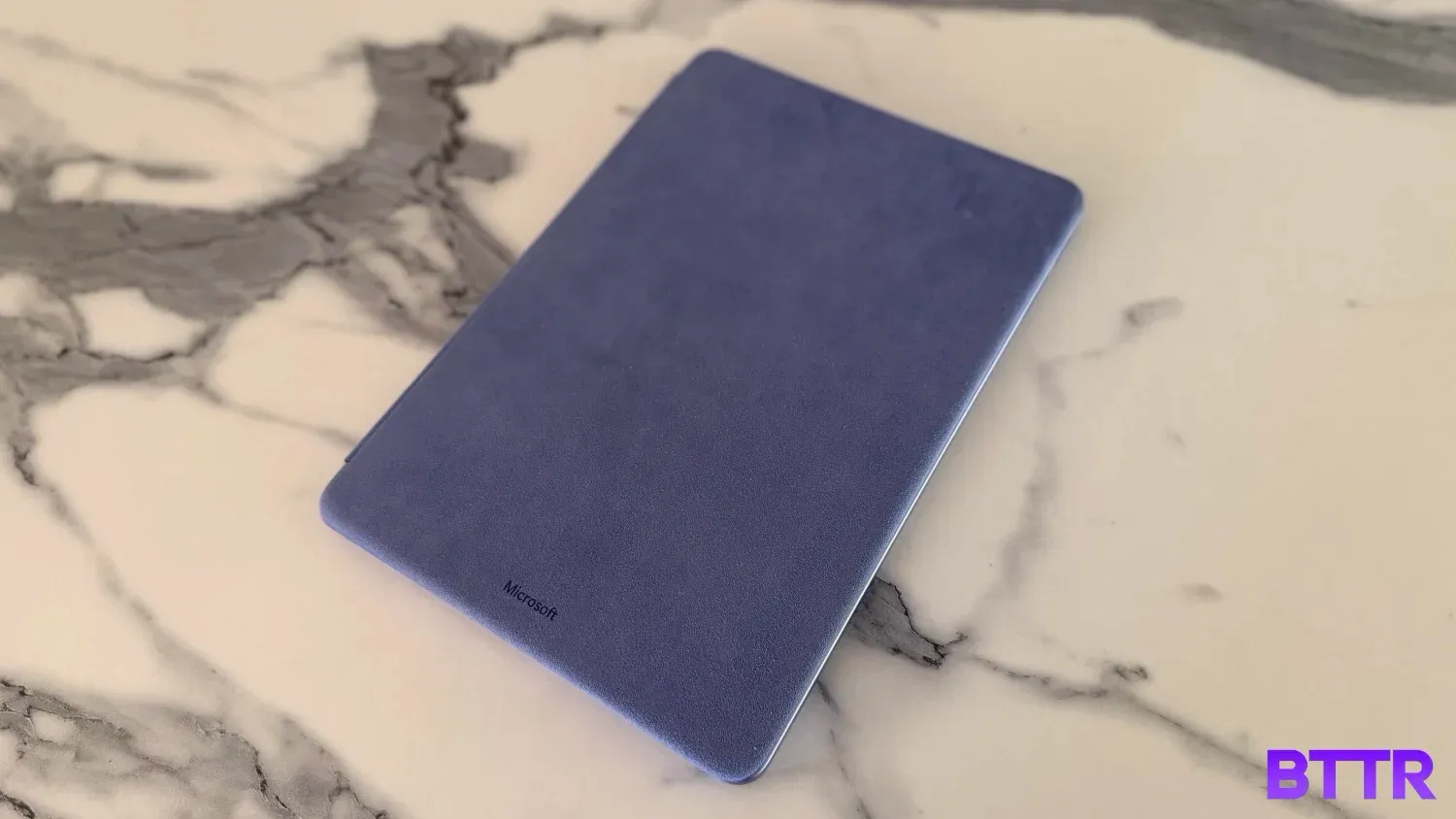
Final Verdict
The Surface Pro 12 is a device all about portable productivity. And it delivers on that front. The 12-inch tablet is easily transportable, compact, lightweight, and versatile, so long as you spring for the keyboard attachment as a minimum.
But it’s also pricey for what it is. It’s a gorgeous piece of tech, particularly in violet, but with a starting price of $1,499 RRP (excluding the wall charger and the keyboard), it feels overpriced. The Snapdragon X Plus processor isn’t so powerful to warrant costing as much as it does.
With the keyboard attachment, the Surface Pro 12 costs more than the 13-inch M4 MacBook Air, which is arguably the epitome of portable productivity. Obviously, there’s a Windows vs OS X consideration there, but if you can manage it, I’d recommend the MacBook nine times out of 10.
Buy the Microsoft Surface Pro 12 if:
- You can afford to add in the keyboard, stylus, and wall charger accessories
- You need a Windows device
- You can sacrifice power for battery life
Skip the Microsoft Surface Pro 12 if:
- You are looking for a budget-friendly tablet
- You’re looking for an entertainment/casual device over a productivity tool
- You need something with a lot of power
Where to buy
The Microsoft Surface Pro 12-inch is available now, with an RRP of $1,499 for the tablet only.
You can buy it from the following retailers:
FAQ
Does the Surface Pro 12-inch come with a keyboard and pen?
No, the keyboard and Surface Slim Pen are sold separately. The device includes only the tablet itself and a USB-C cable. The keyboard attachment is highly recommended for productivity work but adds to the overall cost.
How is the battery life on the Surface Pro 12-inch?
Microsoft claims up to 16 hours of video playback, though real-world usage will vary depending on your tasks. Expect a full workday of mixed use on a single charge, making it suitable for on-the-go productivity.
What processor does the Surface Pro 12-inch use?
The Surface Pro 12-inch features a Qualcomm Snapdragon X Plus (8 Core) processor, which is an ARM-based chip. This means excellent efficiency and battery life, though some older Windows applications may have compatibility considerations.
How does the 12-inch size compare to other Surface Pro models?
The device weighs approximately 680 grams and measures 7.8 mm thick, making it noticeably more compact and portable than the 13-inch version. The 12-inch display with a 3:2 aspect ratio is ideal for those prioritising portability over screen real estate.
Is the Surface Pro 12-inch a Copilot+ PC?
Yes, the Surface Pro 12-inch is a Copilot+ PC, featuring AI capabilities built into Windows 11 and offering enhanced productivity features powered by Microsoft's AI assistant. Those AI features are underwhelming, though.

